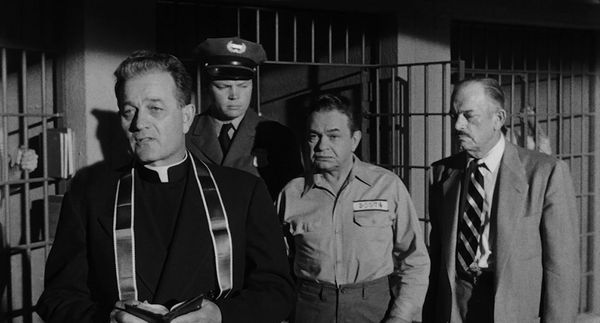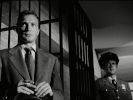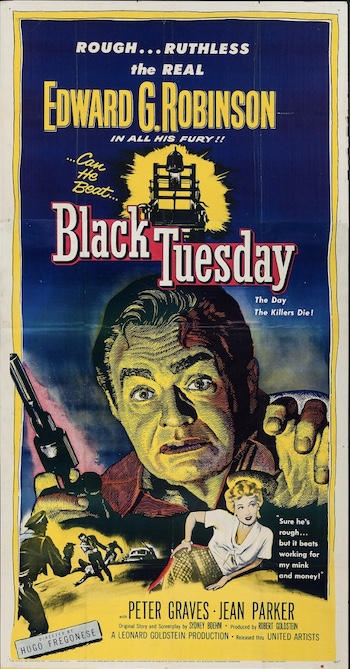Eye For Film >> Movies >> Black Tuesday (1954) Film Review

Death Row. The camera tracks across five barred cells, lingering close up on each of the inmates. The first, Selwyn (Don Blackman), a heavy set black man, sings the blues, the wooden stool on his lap a drum. The mob boss Vincent Canelli (Edward G. Robinson), armed robber Peter Manning (Peter Graves) and another all pace, like caged beasts. The final man, clutching the bars for dear life, screams, "Shut up, will you?"
Hard cut.

The hard cut is a masterstroke by director Hugo Fregonese. From the claustrophobic to the wide open shot, the gates of death row; from slim, ornamented a cappella to the crash of a dissonant orchestral chord, he makes you sit up in your seat and take notice. Then the credits roll.
It's Tuesday. Two of the convicts, Manning and Canelli, are about to be executed. Manning is offered a ten day stay of execution if he gives up the location of the $200,000 (a little shy of 2.5 million today) that he stole. He refuses. An elaborate plot to spring Canelli from jail is being orchestrated by his girlfriend Hatti Combest (Jean Parker). If Canelli can get his hands on Manning's money then he can fund his getaway. In the escape, guards are killed, hostages taken and the prisoners are freed. Wounded and still bleeding, Manning retrieves his loot from a safety deposit box at a bank, but in doing so he triggers the suspicions of a security guard. Soon the police will besiege the warehouse that he, Canelli and his gang are hiding out in.
Black Tuesday is full of thoroughly unpleasant characters. Canelli treats people as disposable, using his fellow prisoners as decoys to throw off the police. He causes hurt for amusement and, when the game looks like it's up, kills for no sane reason. The members of his gang are not much better. It's not just the criminals: there's Father Slocum (Milburn Stone), a compassionless priest; Lou Mehrtens (Hal Baylor), a petty, cruel prison guard; the reporter who finds watching people being fried in the electric chair entertaining. Apart from the physician Dr. Hart (Vic Perrin), the murdered prison guard and his kidnapped daughter (John and Ellen Norris (James Bell, Sylvia Findley)), the only remotely likeable character is Peter Manning.
Details matter in Black Tuesday. In the bank we find out that the safety deposit box is about to expire. If Manning hadn't been broken out of prison, it would have been opened and his stolen money found. So why didn't he trade the money for a stay of execution? What really motivates him, and why does he act the way he does at the end of the film - dignity?
The film has a German Expressionist look about it, more so than many of the later American film noirs: the way faces are shot, the bizarre object in the warehouse. In places the shapes made by hard shadows cut up the screen in Cubist-like Geometrizations. The fast cuts between cinematographer Stanley Cortez's unsettling high and low angled shots give a sense of that movement's Mobile Perspective.
Black Tuesday has a very tight script, uncomfortable violence, unlikable characters and stark, uncompromising visuals. Everything film noir needs.
Reviewed on: 17 Nov 2024















